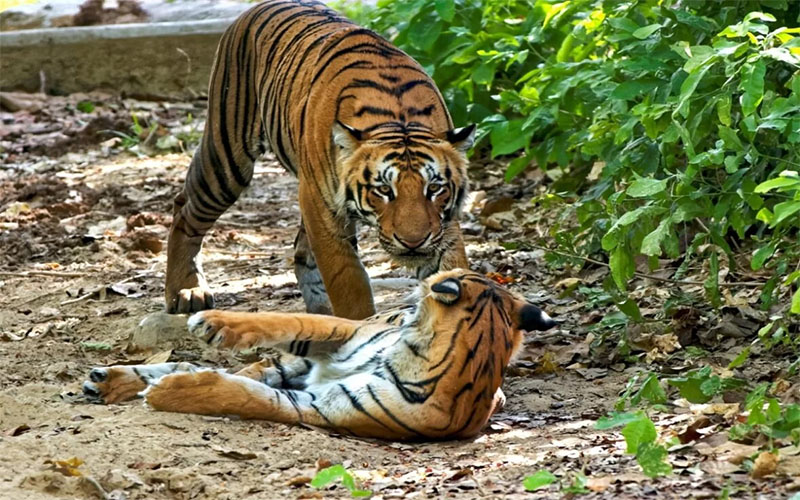Explore Panna in Comfort: Curated Luxury Jungle Escapes
Overview: Explore the wild beauty of Panna National Park while staying in some of Central India’s most enchanting
The reproductive cycle and early rearing of tiger cubs in India is a remarkable process that showcases the tigress’s dedication, resilience, and adaptability. From courtship and mating to birthing and nurturing her young, a tigress plays a crucial role in the survival of her species.

Tigers reach sexual maturity around two to three years for females and slightly later for males, with territory and competition influencing mating opportunities. Dominant males secure access to receptive females, often through aggressive displays to establish territory, as documented by biologists like Dr. George Schaller and Valmik Thapar.
Female tigers enter estrus approximately every 21 days in the wild, engaging in brief, frequent mating sessions with a selected male. These mating rituals, involving scent-marking and vocalizations, often appear aggressive to human observers but serve essential reproductive functions.

Following a gestation period of about 105 days, a tigress seeks a secluded den to deliver her cubs, which are born blind and vulnerable. Conservationist Kailash Sankhala observed that experienced tigresses meticulously select safe birthing spots to protect their young from predators.
The tigress fiercely protects and nurses her cubs during their first two months. Cubs face constant dangers, including predation by leopards, wolves, and even male tigers not siring them. Naturalists like David Smith documented that tigresses often relocate their cubs to shield them from threats, significantly limiting their own range in the process.

Cubs begin accompanying their mother on hunts around two months old, observing and practicing skills needed to become independent hunters. Studies by biologists like Dr. Schaller and Dr. Ullas Karanth highlight the importance of play and early attempts at stalking as fundamental in developing hunting techniques.
By 18 to 24 months, cubs are capable of hunting alone. At this stage, the tigress often comes back into estrus, pushing her nearly adult cubs out of her territory to make way for a new litter. This phase, observed by Thapar in Ranthambore, marks a challenging transition as young tigers navigate territory establishment and self-sufficiency.
Understanding these life stages illuminates the intricate balance of maternal care, survival strategies, and conservation challenges. Habitat loss and poaching intensify these threats, making conservation efforts critical for preserving this iconic species in India’s wild.
Have questions or ready to plan your adventure? Contact us today and our team will help you craft the perfect wildlife experience.